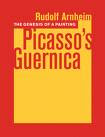W. H. Vanstone, in his book Love's Endeavor, Love's Expense, reflects, "I knew of the God without Whom no sparrow falls to the ground. I could conceive, as a logical or theological possibility, that my tree, like the sparrow, might be important to God. But always the problem arose of disproportion or incongruity. [...] It was one thing to believe that God created all things, but another to believe that this 'fag-end' of His creation could be important to Him."
He then recounts a story about two boys who were looking for something to do on their holiday break from school. The boys came to Vanstone, searching for ideas, and he suggested that they build a model of a certain piece of land using sticks, rocks, paint and whatever other materials the could find. Despite the boys initial lack of enthusiasm, they chose to take on the project, and Vanstone reflects on their progress in an illuminating way.
Although the project began without much excitement, it quickly became an obsession: they would work long hours and miss meal times. He notes how "the placing each stone and twig was a matter for careful discussion." Once something was placed on the model, a moment of waiting and seeing if it was 'right' followed. New possibilities would arise after the placement of each piece, as well as new difficulties.
Vanstone writes that "As the model grew and became of greater value, each step in its creation became of greater moment and was taken with greater intensity of care. Each item that was placed seemed to possess greater power to make or to mar. [...] The once contemptible sticks and stones now had a certain power over those who were using them -- a power to effect or negate the completion of that which was being made, and so to satisfy or frustrate those who were making it. The two boys became vulnerable in and through that which, out of virtually nothing, they had brought into being."
"As I watched this microcosm of creative activity, and as later I reflected upon it, three things gradually became evident to me. The first was that, in such activity, there was both working and waiting. One could say that the activity of creating included the passivity of waiting -- of waiting upon one's workmanship to see what emerged from it, and to see if that which emerged was 'right.' The second, which followed from the first, was that, in such activity, the creator gave to, or built into, his workmanship a certain power over himself. He gave to his workmanship that which, if it were not his workmanship, it would not possess -- a power to affect himself, to have value, significance, or importance for himself. The third, which followed from the second, was that in such activity disproportion between creator and workmanship, or between creator and material, was overcome by the gift of value. That which in itself was nothing was transformed, in the creative process, into a thing of value: as the work of a creator, it received a new status in relation to the creator. The incongruity between the great and small was overcome when the creativity of the great was expended in and upon the small."
"Therefore, through this simple incident, I was helped to see that awareness of the importance of any aspect of material reality may be awareness not of its relevance to human well-being but simply of its being the work of love: and that a sense of responsibility for it may be a sense of responsibility for a work of love."
See W. H. Vanstone, Love's Endeavor, Love's Expense, 30 - 34.
Subscribe to:
Post Comments (Atom)




No comments:
Post a Comment